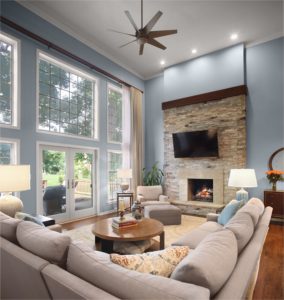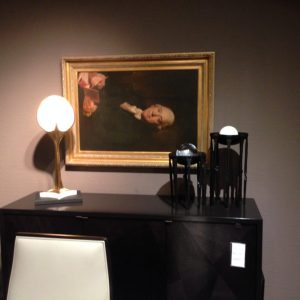Originally appeared in The Washington Post Metrolife magazine
So now the boxes are unpacked, you’ve got a bed to sleep on, a closet to store your “stuff” in, and a kitchen to cook in. Now, comes the fun part. It’s time to decorate! Some of us are amateur interior designers, some of us quake at the sight of a paint chip. Whatever category you fall into, it never hurts to have some tips from the experts. Just as with a kitchen, the most important thing to do when designing the rest of your home is to establish a floor plan, says Kathy Alexander, owner of Alexander Interiors, LLC in Fairfax Station, Virginia. That doesn’t necessarily mean sitting down to sketch out a plan with pencil and paper. It does mean giving serious thought to what activities go on in which rooms, and how you use your living space. “Sometimes you get boxed in and think of space in traditional ways,” says Alexander. “Use your imagination—for example, why can’t your sunporch be your home office?” A floor plan will also help you determine how many pieces of furniture you need for each room, the size of the furniture, etc. “This will keep you from buying big ticket items willy-nilly,” says Alexander. Once the floor plan is established—either by yourself or by an interior designer—then you can implement the plan as your budget allows. When it comes to buying furniture, Alexander strongly advises buying only quality furniture which will last decades longer than inexpensive furniture. “The only people who can afford cheap furniture are wealthy people,” says Alexander, “because they will have to replace it over and over again.” “Furniture is an investment that one can move from apartment to single family home,” Alexander adds. “Buying quality furniture will be cheaper in the long run because it will last much longer and look and feel better.” Make sure you pay attention to the scale and relation of the furniture to the size of the room and to other pieces in the room, says Alexander. Yes, you can mix and match styles and sizes, but you have to know what you’re doing, Alexander says, or what you think of as eclectic will come off as more of a mish-mash than you’d like. As far as design trends, the art modern look of the early 20th century is very popular at the moment, says Alexander, with its cleaner, pared down approach. The use of mirrors and mirrored furniture reminiscent of the 1930s is also catching on. Furniture and accessories sporting metallic accents, and fabric with metallic threads are popular once again. At Roche Bobois in Chevy Chase, the furniture collection that is taking center stage this fall, says vice president David Zein, is “Les Voyages.” Inspired by the Medina Palace in Morocco, this new collection is highlighted by warm, spicy colors such as orange, pomegranate, and plum. “Last year we saw a more Asian influence—very Zen,” says Zein. “This year we’re seeing a warmer, more romantic, inviting, and convivial look.” The world is getting smaller, Zein adds, and there is no longer a true modernist or traditional flavor to home furnishings. Instead, many of us like to mix and match our furniture and accessories to reflect our varied interests and travels. Many of us are collectors, and even if our collections aren’t particularly valuable, they hold sentimental value. The way to give your collections oomph, says Alexander, is to keep the objects all together. “It’s more meaningful and more interesting when the items in the collection are displayed together,” Alexander says. “Otherwise you have a watered down effect.” Don’t forget the lighting when you’re decorating your room. When you’re choosing lamps, Alexander advises, keep in mind the size of your sofa, your table, your desk and whatever furniture is in the room. “You can have different lamps in the room but you want to have an even distribution of light in the space,” says Alexander, “so that the room can function as well at night as it does during the day.” New advances in lighting, such as halogen lights, provide a brighter, whiter light, Alexander says. Interior designers like Alexander aren’t just for the rich and famous and if you think a pair of experienced eyes will help you achieve the look you want for your home, it may well do you good to consult a designer, especially if you’re building a new home.


